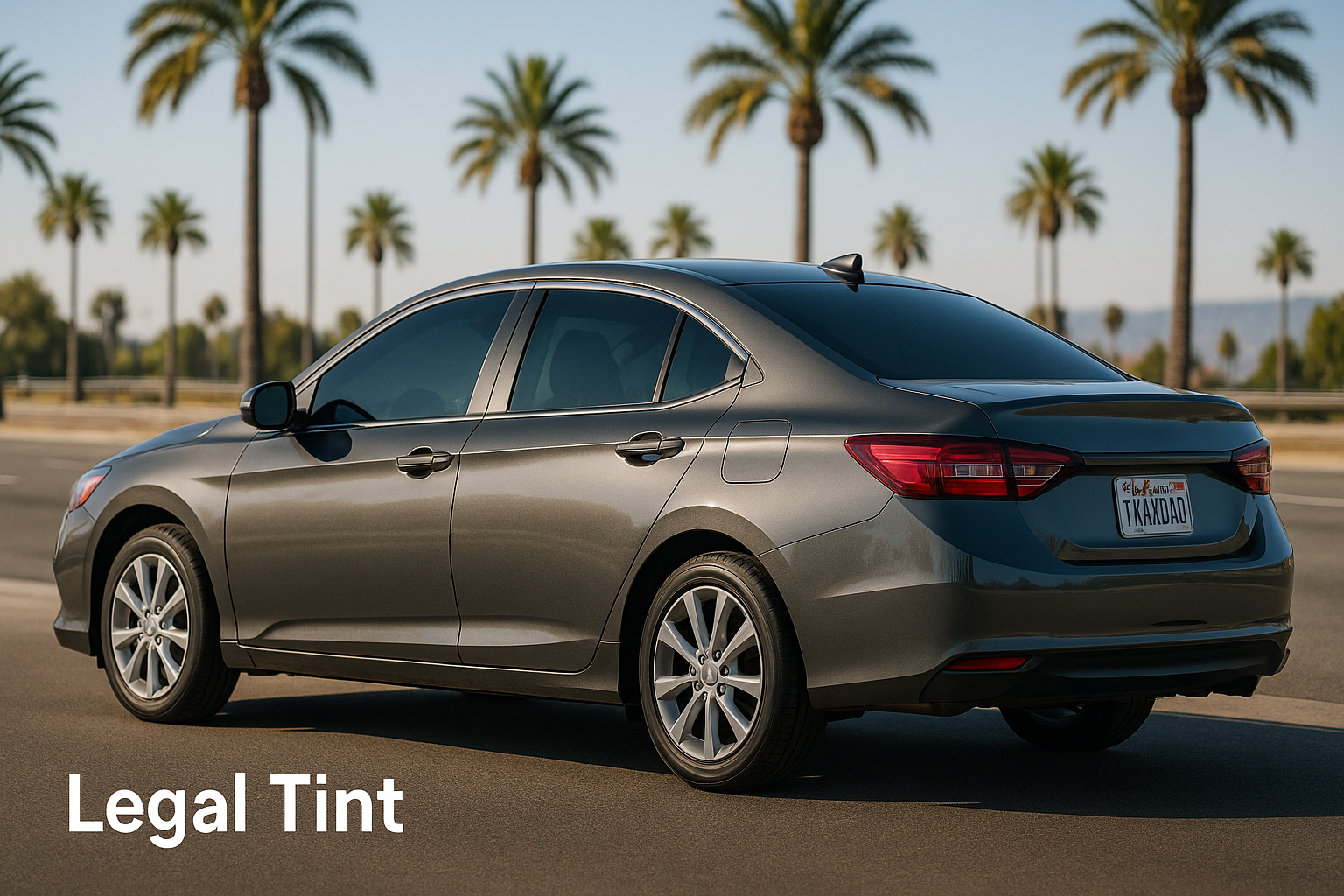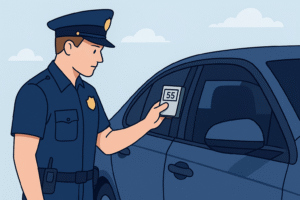Tinting your windows helps increase privacy and prevents glare and protects the interior of your car, as well as UV rays. But California is one of the states with the stricter tinting laws in the nation and this is essential to get acquainted with the regulations prior to changing your cars. This guide explains everything about legal tint in California, including the California tint law, exemptions, penalties, and frequently asked questions.
Understanding the California Window Tint Law
The California window tint law, found in California Vehicle Code Section 26708, clearly defines what’s considered a legal tint on different windows of a vehicle. Being aware of such rules helps to avoid a breach of them and being fined.
Windshield Tinting
-
Only the top 4 inches of the windshield can be tinted.
-
The film must be transparent and non-reflective.
Front Side Windows
- The legal tint limit in California for front side windows requires at least 70% of visible light transmission (VLT).
- This implies that you should put a very light tint on such windows.
Rear Side & Rear Windows
-
You are allowed to tint your rear side windows and rear windshield as dark as you prefer.
-
If your rear windshield is tinted, you must have dual side mirrors for visibility.
These rules are in place to ensure safety while allowing flexibility for drivers who want darker tints on rear windows.
California Tint Laws on Reflectivity
The California tint laws also regulate how reflective your windows can be.
-
Front and rear side windows must not be excessively reflective or mirrored.
-
Highly reflective films are prohibited as they can cause glare and pose safety risks.
Medical Exemptions for Legal Tint in California
If you have certain medical conditions that require additional protection from sunlight, you may qualify for an exemption from the standard California tint law.
Who Qualifies?
People with medical conditions like lupus, melanoma, albinism, or extreme photosensitivity may be able to get darker tints.
How to Apply
- A licensed physician should give a signed certificate of the medical necessity.
- Always have this document in your car when you are stopped by law at the car inspection.
This exemption allows you to go beyond the legal tint limit in California without facing penalties.
Penalties for Illegal Tint in California
Violating the California window tint law can result in tickets and fines.
-
First Violation: Usually a correctable “fix-it ticket” requiring you to remove the illegal tint and prove compliance.
-
Subsequent Violations: Can lead to higher fines ranging between $25 and $197, depending on the jurisdiction.
Persistent non-compliance could also escalate penalties.
Ensuring Your Tint Is Legal
If you’re unsure whether your tint complies with California tint laws, you can:
-
Ask a certified tint shop to measure your window film using a VLT meter.
-
Always request manufacturer certification for the tint film used and ensure it has a permanent sticker between the tint and glass, as required by law.
Choosing the Best Legal Tint in CA
When selecting a tint:
-
Make sure it meets the 70% VLT requirement for front windows.
-
Choose high-quality films that block UV rays while maintaining compliance.
-
Get your tint installed by a professional familiar with California tint laws to avoid mistakes.
Why California Has Strict Tint Regulations
California enforces strict tinting rules to:
-
Improve road safety by ensuring drivers maintain clear visibility.
-
Assist law enforcement officers during traffic stops by allowing visibility into vehicles.
-
Prevent accidents caused by excessive glare or poor outward visibility.
FAQs About Legal Tint in California
What is the legal tint in California?
The legal tint in California for front side windows is 70% VLT, and the top 4 inches of the windshield may have transparent, non-reflective tint.
What is legal tint in California for rear windows?
There are no restrictions on how dark you can tint the rear side and rear windows.
What’s the legal tint in California for front windows?
The legal tint limit in California for front windows is 70% visible light transmission.
Can I have 5% tint in California?
Yes, but only on the rear side and rear windows, not on the front side windows.
Do I need a sticker for my tinted windows?
Yes, manufacturer certification stickers are required between the glass and film for proof of compliance.
Final Verdict: Stay Compliant With California Tint Laws
Complying with the California window tint law acts not only as a way to stay out of trouble but, also a way to ensure that you are safe, along with other drivers. It is important to test your tint with a professional installer at all times, maintain proper documentation when you are dealing with the tint and the tint limit according to the law in the state of California.
Doing it the smart way will mean that you will never have to be faced with such dilemmas as siding with the law or with the practical application of tinted windows that are so helpful when it comes to privacy, UV protection and fashion. Visit here to know more about legal laws.





